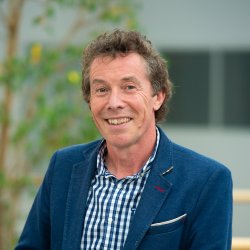
Erivan White
Academic and research departments
Faculty of Arts, Business and Social Sciences, Surrey Business School.About
Biography
I started teaching for the Open University soon after completing my M.A. at the University of York. Since then I have taught in a variety of FE/HE settings and spent several years as a senior manager in a large sixth-form college. Having taught a variety of subjects at Access and A-Level I was keen to lend my experience to the Foundation Year in Business and Economics at the University of Surrey where I now teach full-time.
My qualifications
Publications
This paper discusses the establishment of two new foundation year programmes at the University of Surrey; one in the Faculty of Engineering and Physical Sciences and the other in the Faculty of Arts and Social Sciences. Specifically, it explores how the programmes have been constructed and how programme teams have attempted to avoid the ‘deficit model’ by adopting a student-centred approach that focuses on the development of successful students when considering staffing expertise and curriculum design. This is followed by an exploration of staff and student perspectives on what constitutes a successful foundation year student. Finally, the paper comments on how success will be measured in the future, suggesting that, whilst specific metrics might serve as indicators of success, no single metric is likely to capture the complicated nature of what success is and what it looks like for the individuals we teach. Overall, the paper suggests that the question, ‘What is a successful foundation year student?’ should be considered carefully in the process of designing and developing foundation year programmes.
•During Covid-19 people visited a wide range of nearby places to get away from everyday demands, without needing to travel.•People engaged with a wide range of activities in those places, but many activities were place dependent.•All place visits benefitted hedonic and eudemonic wellbeing, but outdoor activities were more beneficial than indoor activities.•Place and activity choices varied between people. Younger people and those living in urban areas visited less outdoor places.•To support wellbeing for all it is important to identify the variety of nearby places people visit and manage access and provision of such places. Being able to get away from everyday stressors and demands, even if close to home and just for a few minutes, is important for wellbeing. During the Covid-19 lockdown periods, people’s ability to get away changed significantly. An increase in visits to nearby natural places is well documented. Little is known about other types of places people visited to get away. An online UK survey was conducted in 2020 (N = 850) investigating what places people visited to get away during the pandemic, what they did in those places, how place and activity choices were related to each other and to demographic variables, and to recalled hedonic and eudaimonic wellbeing during those visits. Participants visited a rich array of places and engaged in a variety of activities that supported their hedonic and eudaimonic wellbeing needs. Responses were grouped into four types of places (at home outdoors, at home indoors, away from home outdoors, and away from home indoors) and seven activity types (cognitive, walks, nature engagement, social activities, technology use, relaxing, and exercise). Place and activity choices were strongly linked. Visiting outdoor places was most beneficial for wellbeing (and most common), especially when it involved mindful engagement with nature (bird watching, gardening) or exercise. Staying indoors, engaging with technologies (computers, television) was least beneficial and more common among those with no degree or job, living in urban areas, and identifying as male. The findings demonstrate the importance of understanding place-activity interactions to support the wellbeing benefits derived from visits to places to get away.